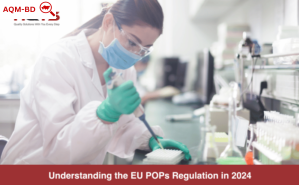There are many different types of chemical test for garments and having your products tested in an accredited chemical testing laboratory will ensure they meet relevant standards and regulations.
Chemical testing services test, analyse and certify a wide range of chemicals for purity, chemical compatibility and environmental impact. Consumer goods are subject to various regulatory and legal requirements that are designed to help ensure the health and safety of the consumer.
With increasing concern regarding the environmental, health, and safety of textiles, and successive introductions of relevant governmental regulations, textile manufacturers are facing unprecedented challenges in quality assurance.
The following is a list of eight textile chemical testing methods and items you should know if you work in textiles and apparel.
Azo
Azo dyes are the major colorants used within the textile industry. They are a large group of synthetic organic dyes that contain Nitrogen and azo dyes and are usually used in substrates such as textile fibers, leathers, plastics, papers, hair mineral oils, waxes, food stuffs, and cosmetics. Some azo dyes are considered a risk to humans as they contain nitrogen-nitrogen double bonds.
Allergenic disperse dyes
Allergenic disperse dyes refer to the dyes that may cause allergy to skin, mucous membranes, or respiratory passages in the human body or an animal. There are around 27 different kinds of allergenic disperse dyes and they are mainly used for dyeing polyester, polyamide and cellulose acetate fiber.
Carcinogenic Dyes
Carcinogenic dyes are banned in certain textile materials such as synthetic fibers that will be in contact with skin. Many disperse dyes can cause allergies and rashes. The carcinogenicity of dyes can cause tumors or cancer in humans or animals. The most commonly known carcinogenic dye is C.I. Basic Red 9 – which can cause bladder cancer.
Heavy Metals
Heavy metals are a chemical element with a specific gravity that is at least five times the specific gravity of water. Heavy metals include cadmium, chromium, lead, mercury, nickel, zinc, and others. Heavy metals are usually used for industrial reasons such as in the manufacture of pesticides, batteries, alloys, metal parts, textiles, dyes, steel, etc.
Formaldehyde
Formaldehyde is a substance of very high concern (SVHC) and the use of this substance is tightly restricted worldwide. It is highly toxic and can cause severe burns and even result in death if swallowed, inhaled or even if it comes into contact with the skin.
It has no color, is flammable, and has an extremely pungent smell. However, it’s an extremely versatile chemical and can be used in many different ways including manufacturing resins, disinfectants and fixatives and can be used as a preservative in consumer products.
Phenols
Phenols are synthesized at an industrial level as they are widely used within the medical field and the food industry. Phenols are also produced by plants and microorganisms. They are acidic in nature and tests for phenolic groups can be carried out by various methods including a litmus test, ferric chloride test, phthalein dye test, Liebermann’s test, and bromine water test.
pH
Every substance from juices to water has a pH level and testing the pH of a liquid can be completed in many ways and can help to determine whether it is acidic, alkaline, or neutral. On the pH scale, anything below 7 is acidic, anything above 7 is alkaline with 7 being neutral.
pH Testing
Before using a pH probe and meter to test pH, you should calibrate the meter in a substance with a known pH rating to ensure its accuracy. Pure or distilled water should have a pH level of 7. Before doing your pH test, rinse the probe with clean water and dry with a tissue, collect the liquid in a sample container and use a thermometer to check the temperature of the sample. Insert the probe into the sample and wait for the measurement.
Once the line is steady your pH level is ready to be recorded. You can also use testing strips by collecting a sample of liquid in a container and placing the strip into the liquid, waiting a few seconds until the strip indicator changes color before comparing it to the color chart that came with the paper to establish the pH level of the liquid.
Pesticides
Pesticides are chemical compounds that are used to kill, repel, or control unwanted plants, weeds, animals, and microorganisms. However, humans and animals are exposed to low levels of pesticides in their diets. Pesticide residues are under strict legislation regulations worldwide and the maximum residue level (MRL) is the highest amount of an individual pesticide residue permitted to be present in or on food or animal feed. The process for analyzing usually involves extracting the residues, cleaning-up to remove any other components before analyzing to identify and measure the amount of pesticide residue.
About AQM BD
AQM BD is a third-party inspection company that provides all of the above services and more when it comes to chemical testing. You can rely on the expertise and technical resources of AQM BD’ product testing to help ensure your compliance with relevant regulations, as well as your own technical specifications. Through our professional consumer product testing laboratory, you can count on us to test for compliance against RoHS, REACH, ASTM, Ca Prop 65, EN71 and many more.
Related:
What You Need to Know About the SVHC List
Resources
- https://www.globalspec.com/learnmore/testing_calibration_services/chemical_testing_services
- https://www.blcchemicaltesting.com/chemical-testing/azo-dyes-testing/
- http://garmentstech.com/allergenic-disperse-dyes-its-uses/#:~:text=What%20are%20Allergenic%20Disperse%20Dyes,of%20human%20body%20or%20animal
- http://garmentstech.com/carcinogenic-dyes-its-limit-in-textile-leather-product/
- https://www.blcchemicaltesting.com/chemical-testing/heavy-metals-testing-and-analysis/https://www.qima.com/testing/formaldehyde-testing-laboratories
- https://www.vedantu.com/chemistry/test-for-phenolic-group
- https://sciencing.com/methods-testing-ph-liquids-5809509.html
- https://www.mt.com/my/en/home/applications/Laboratory_weighing/pesticide_residue_testing.html






